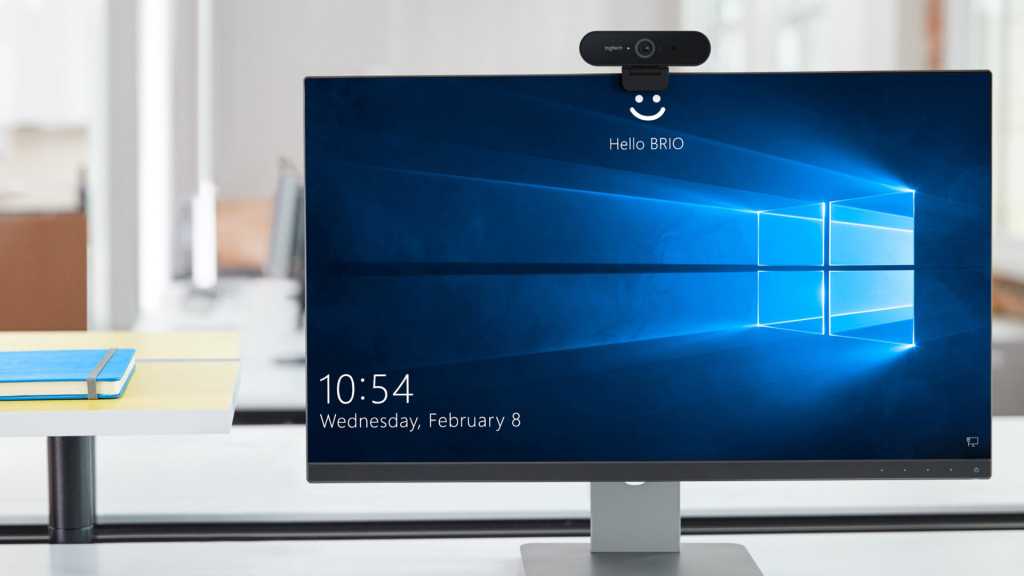Windows Hello has long been a favored feature for those seeking a quick and secure way to log into their Windows devices using facial recognition. However, a recent update has sparked discussions around the system’s ability to function effectively in low-light conditions. In April 2025, Microsoft introduced a patch that now mandates the use of color cameras for visible face detection during sign-in. This change has raised questions about the practicality and implications of facial recognition technology in dark environments.
Understanding the Update
According to Microsoft’s support page, this update was issued as part of April 2025 Patch KB5055523, which also addressed a serious spoofing vulnerability that could compromise user security. The update requires Windows Hello to utilize both a traditional color webcam and the infrared depth camera present in many devices. This dual-camera approach aims to improve authentication accuracy while enhancing security measures.
Practical Tests and Experiences
To gauge the functionality of the updated system, I tested three different laptops: the Surface Laptop 7th Edition, an Asus ZenBook S 14, and an MSI Prestige 16 AI Evo. After updating each device with KB5055523, I took my laptops into a significantly dark environment—my basement office, where even in pitch darkness, I struggled to see my hand in front of my face.
To my surprise, despite the lack of ambient light, all three laptops successfully recognized my face and allowed me to log in using Windows Hello. I even activated Windows’ enhanced anti-spoofing feature, which is designed to make it increasingly difficult for unauthorized users to gain access. My experiences indicate that the LED illumination from the laptop screens provided sufficient lighting for facial recognition, despite Microsoft’s claim that color cameras are necessary.
Mixed Results Across Devices
Interestingly, my findings contrast with those reported by colleagues and other tech experts. For instance, a colleague and reports from Windows Central noted that their devices struggled to recognize their faces under similar conditions. This inconsistency raises questions about the effectiveness of the update across different hardware configurations and usage scenarios.
While some users may experience delays or failures in recognition due to the dark environment, a practical solution readily presents itself: simply turning on a light or using a numeric PIN as an alternative login method. In fact, my testing revealed that Windows has always prompted users for a PIN as a backup login option, reinforcing the system’s flexibility.
Implications of the Update
The requirement for color cameras and visible light does indeed enhance the security of facial recognition in theory, as it prevents unauthorized access based solely on infrared signatures. However, as noted in my personal tests, the practical differences may not be as profound as anticipated. The concerns raised by many in the tech community could be classified as an overreaction to what is primarily a minor modification to an already existing login process.
This shift towards a more stringent authentication requirement can be viewed as Microsoft’s commitment to bolstering user security against increasingly sophisticated spoofing attempts. Yet, the realities of user experience may overshadow these security intentions, especially if significant numbers of users continue to face login challenges in low-light scenarios.
As technology continues to evolve, the balance between security and usability remains a crucial factor. Companies like Microsoft must ensure that updates not only protect users but also enhance their overall experience. Whether this requirement for color cameras will serve as a beneficial enhancement or simply an unnecessary complication will depend on user feedback and ongoing improvements to the technology.
Community Response
The tech community’s response to these updates has been a mix of skepticism and curiosity. Some users feel that the necessity of color cameras may alienate those using older models or budget devices that may not feature high-quality cameras. Social media platforms and forums have been filled with discussions, as users share their personal experiences and opinions regarding the effectiveness of Windows Hello post-update.
Moreover, analysts suggest that the hardware market may see a shift in demand for laptops equipped with better quality webcams, pushing manufacturers to innovate further. As the usage of biometric logins becomes more prevalent, ensuring accessibility for diverse hardware capabilities will be essential for widespread adoption.
Quick Reference Table
| Feature | Details |
|---|---|
| Update | KB5055523 (April 2025) |
| Requirement | Use of color cameras for facial recognition |
| Test Devices | Surface Laptop 7, Asus ZenBook S 14, MSI Prestige 16 AI |
| Login Experiences | Some success in dark environments; LED light sufficient |
| Security Enhancement | Prevents spoofing using infrared only |
| Community Feedback | Mixed responses, concerns over accessibility |

